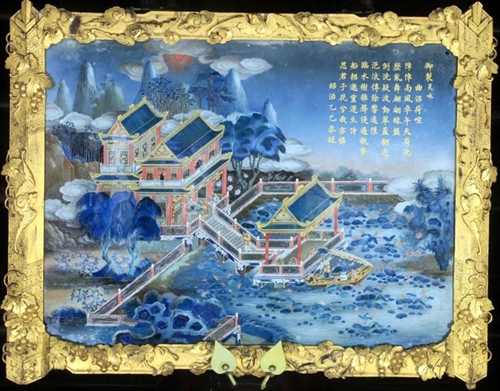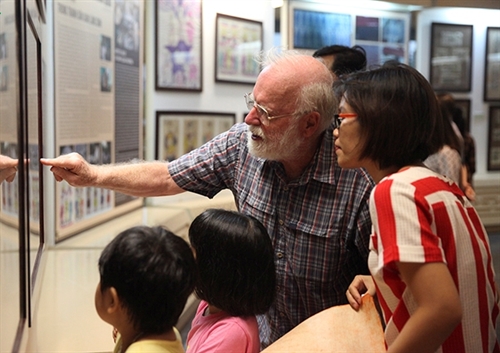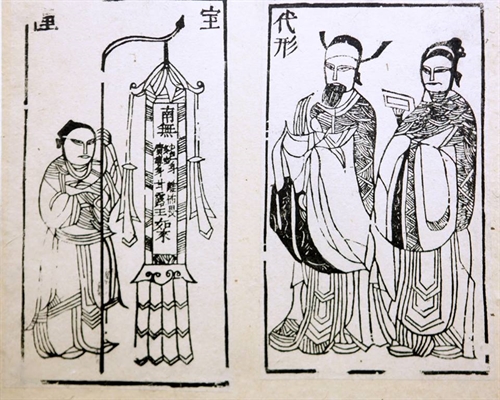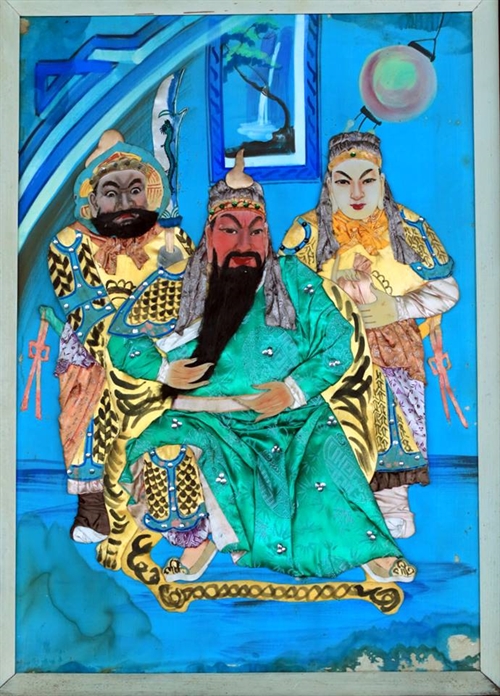 Life & Style
Life & Style

An extraordinary exhibition of folk paintings originating from different regions of the country opened last week in Hà Nội.
 |
| Rare beauty: A glass painting displayed at the Huế Royal Court. |
HÀ NỘI — An exhibition of folk paintings originating from different regions of the country opened last week in Hà Nội.
During the opening ceremony, artisans Nguyễn Đăng Chế, Nguyễn Đăng Giáp and Lê Đình Nghiên printed and presented Đông Hồ and Hàng Trống folk paintings for visitors.
The event, a collaboration between the Hà Nội Museum and the Hà Nội Ceramics Museum, provides art lovers, history buffs and culture enthusiasts a look at paintings and sculptures that were created when few people had access to institutional learning and were generally self-taught.
The exhibition introduces the quintessence of 12 folk painting genres with various works brought by collector Nguyễn Thị Thu Hòa, director of the Hà Nội Ceramics Museum.
 |
| Intrigued: Visitors looking at the paintings in the exhibition. — Photo vov.vn |
Many ancient Buddhist objects of worship, maps, posters and printing tools are on display, illustrating the process of making folk paintings.
Besides showcasing some famous works such as Đông Hồ and Hàng Trống, the exhibition also shows Đồ Thế Nam Bộ (spiritual paintings, burned to pray for health), Sình Village paintings originating from Phú Vang District of Huế City in about the 15th century, Gói Vải (paintings with a silk background and 3D details produced by folding silk) and Thập Vật (spiritual paintings printed from sculpted-wooden planks, only in black and white, which are burned for the dead).
 |
| Thập Vật painting: These spiritual paintings were printed using sculpted-wooden planks, in black and white only, and were burned for the dead). |
The exhibition will also feature colourful southern glass paintings, which came to Việt Nam in the early 20th century when Chinese immigrants opened glass shops in Sài Gòn (the former name of HCM City).
In the 1920s, the art form developed rapidly along with other crafts, spreading throughout six southern provinces. Mass produced products on religious themes, celebrations and interior decorative painting were developed. Some glass paintings were drawn with multi-coloured paints, or with mother of pearl, and combined with coatings of mercury.
 |
| Gói vải painting: Paintings on silk backgrounds. Some details are produced by folding the silk to produce 3D figures. — Photo courtesy of the Hà Nội Museum |
Fine folk arts are an integral part of Vietnamese culture, however, many folk painting genres have been lost, according to Nguyễn Tiến Đà, director of the Hà Nội Museum.
“We cultural activists and researchers are nervous about the fact that so many folk painting genres now ‘live’ only in the museum,” he said.
“We just know about them through rare old paintings and printing tools. But no one knows how to paint and print them. These objects have their own bodies, souls and stories but they have no vitality in contemporary life.”
“So we have organised this exhibition with the aim of introducing people to these traditional arts. We hope to inspire people to revive folk painting.” — VNS




